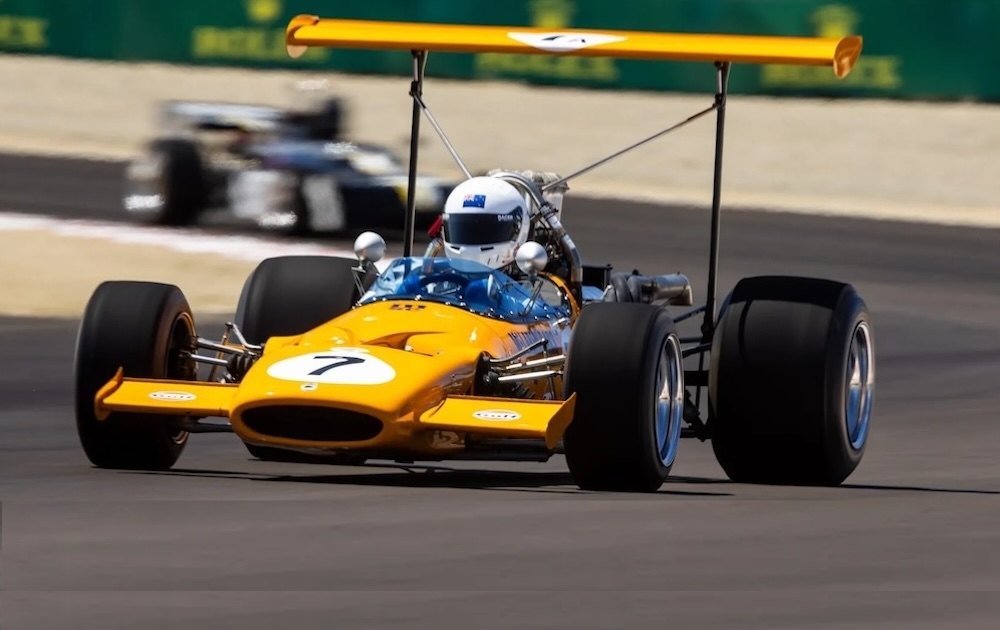The Southern Hemisphere’s largest historic racing event, the VHRR Phillip Island Classic, is shaping up to be another spectacular event in 2024. Scheduled for March 8-10, entries are flowing in from all parts of Australia and New Zealand and there are already some exceptional Formula 5000, Can-Am and historic saloon cars confirmed.
A strong contingent from New Zealand includes entries from the McLaren Group including Tony Roberts McLaren M10A 300-09 — a car built for the introduction of the Formula 5000 in the UK in 1969. The prototype M10A won the European Championship and dominated the second year of international F5000. Roberts’ car, a 300-9, was originally supplied to Bob Esseks in the USA and first raced at Road America in July 1969. Tony has been racing various McLaren cars for more than 25 years and was the stunt driver for the recent movie, “McLaren.”
[lawrence-auto-related count=3 category=1403]
Grant Clearwater’s McLaren M10A 300-08 was originally built for Sir Nick Williamson in 1969 and raced at the international hill climbs at St Ursanne-Les Rangiers and Ollon-Villars before making its debut at Preston in September winning all three UK outings in late 1969. Rebuilt at the factory to M10B specification it went on to win four championship rounds and took the British Hill Climb Championship.
The McLaren M10A 300-03 owned by Rob Ward will also be racing. This is a car that was entered in the 1969 U.S. series but later crashed during practice for the race at Mont-Tremblant. It was sold and restored and competed in SCCA races.
Frank Karl’s McLaren M10B 400-185 was originally raced in South Africa by Alan McKechnie and later by several owners in the UK and raced by Len Booysen in 1975 for Team Domingo.
A car that received a lot of personal input from Bruce McLaren is the M10B 400-7 owned in New Zealand by Toby Annabel. This car was very successful in smaller hill climbs and was used in the British Hill Climb Championship in 1974 and ’75.
Of particular interest will be the McLaren Can-Am M8B-1 owned by Alistair Hey as this car was developed for the 1969 Can-Am season where it was totally dominant, winning all 11 rounds.
See more details and photos of the entries at VintageMotorsport.com.
